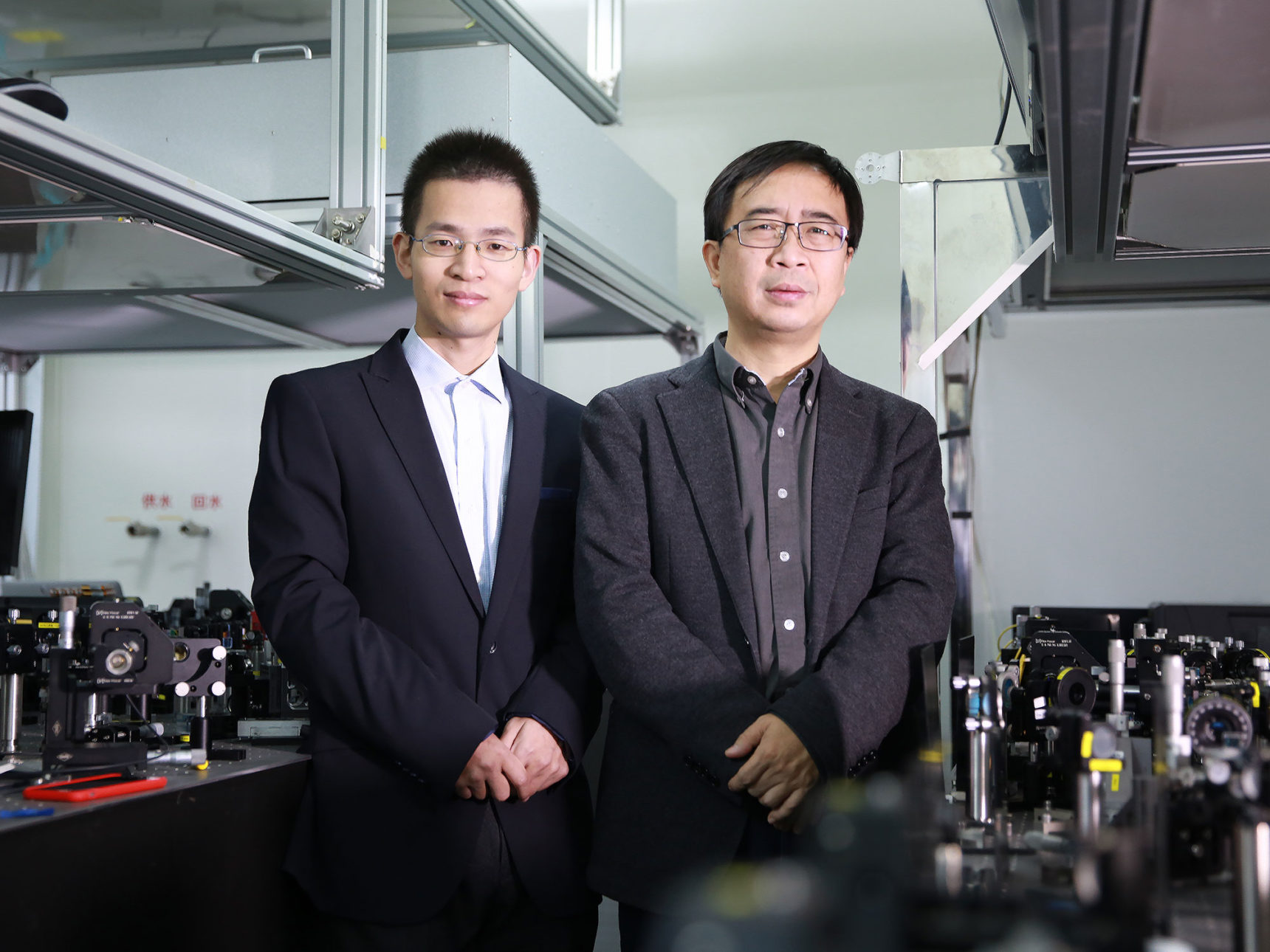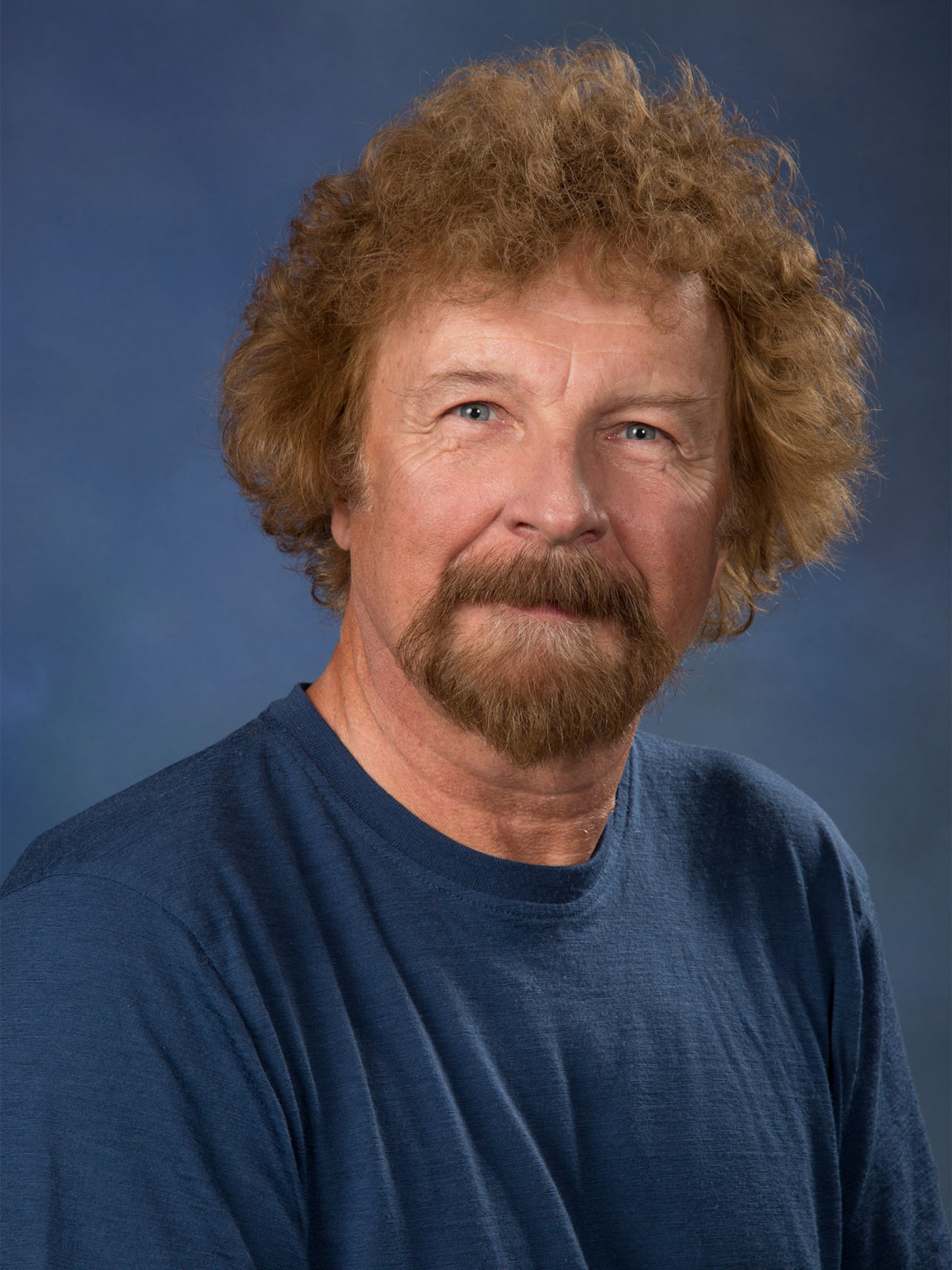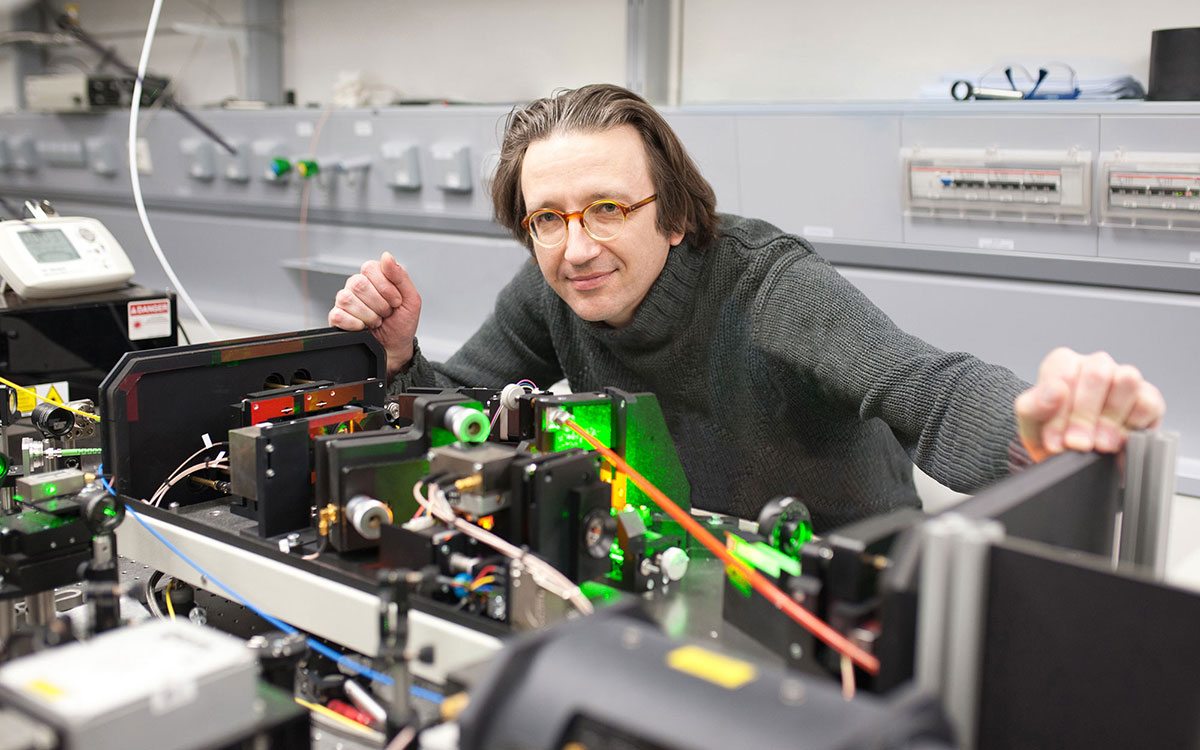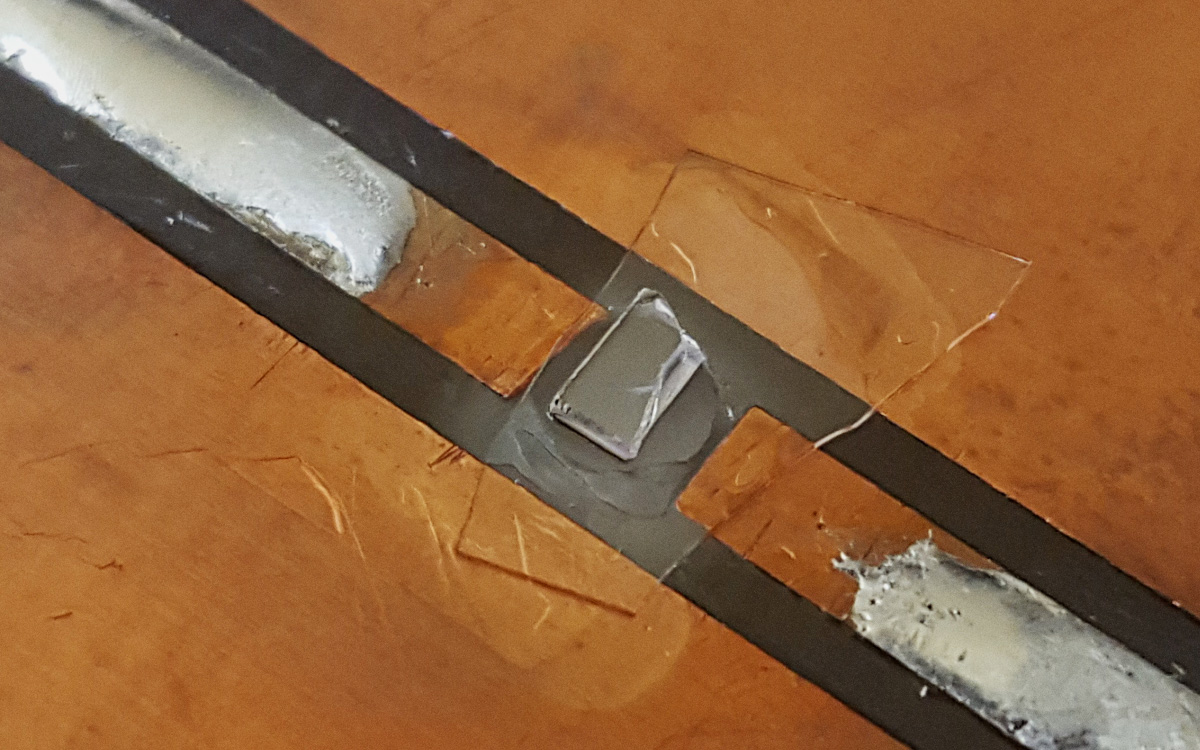Quantum Darwinism: An Idea Explaining Objective Reality Passes First Test
Three experiments have confirmed quantum Darwinism - a theory that explains how quantum probabilities can generate objective classical reality

Not surprisingly, quantum physics has a reputation for a strange and counterintuitive science. The world in which we live does not seem to us quantum mechanical. And until the 20th century, everyone assumed that the classical laws of physics, deduced by Isaac Newton and other scientists - according to which objects always have precisely defined positions and properties - work on all scales. But Max Planck, Albert Einstein, Niels Bohr, and their other contemporaries found that at the very bottom, among atoms and subatomic particles, this specificity disappears, turning into a mess from possibilities. For example, one cannot usually attribute a certain location to this - we can only calculate the probability of finding it in a particular place. An unpleasant question arises: how do quantum probabilities combine into a clear picture of the classical world?
Physicists sometimes call this transformation a "quantum-classical transition." But in fact, there is no reason to believe that the big and the small have fundamentally different rules, or that there is a sharp jump between them. In recent decades, researchers have very well understood how quantum mechanics inevitably becomes classical through the interaction of a particle or other microscopic system with its environment.
One of the most noteworthy ideas in this theoretical platform is that certain properties of objects that we associate with classical physics — for example, location and speed — are selected from the menu of quantum possibilities in a process that is a bit like natural selection in evolution: surviving properties turn out to be, in a sense, the most "appropriate." As in natural selection, those who make more copies of themselves survive. This means that several independent observers can measure the quantum system and agree on the results - which is the criterion of classical behavior.

Chaoyang Lu and Jian-Wei Pan from Hefei University of Science and Technology of China
This idea, called “quantum Darwinism” (CD), well explains why we perceive the world around us in this way, and not in the strange way that manifests itself on the scale of atoms and fundamental particles. Although the details of the puzzle are still unclear, CD helps close the apparent gap between quantum and classical physicists.
And only recently have CDs been able to verify experimentally. Three independent research groups from Italy, China and Germany were looking for a characteristic feature of natural selection - multiple “imprinting” of the quantum system in various controlled environments. So far, these tests are being carried out at a rudimentary level, and experts say that much remains to be done before we can confidently say that CD gives us a true picture of how our concrete reality emerges from the many options offered by quantum mechanics. But for now, the theory is being confirmed.
Survival of the fittest
At the heart of CD lies the ambiguous idea of measuring, that is, observing. In classical physics, we just see everything as it is. We see a tennis ball doing 200 km per hour because it has such a speed. What else is there to talk about?
In quantum physics, this is not so. It is completely unobvious that formal mathematical procedures speak of a “state of affairs” regarding a quantum object. They are a kind of description, which indicates what we may encounter after taking the measurement. Take, for example, the fact that a quantum particle can have several possible states at once - this state of affairs is called “superposition”. This does not mean that the particle is in several states at once - it means that when we take the measurement, we will see one of these results. And before the measurement, different states interfere with each other in the manner of waves, giving results with a greater or lesser probability.
But why don't we see quantum superposition? Why do not all these probabilities of different states of a particle survive, increasing to human scales?
It is often said that superposition is a fragile thing, it is easy to break it when a quantum system collides with a noisy environment. But it is not so. Two quantum objects, interacting, are "entangled" with each other, entering a general quantum state in which the probabilities of their properties begin to depend on each other. Suppose we put an atom in a superposition of two possible states of its quantum property called “spin”: states “up” and “down”. We release an atom into the air, where it collides with an air molecule and gets entangled with it. Now they are in a joint superposition. If the atom’s spin is directed up, then the air molecule can be pushed off in one direction, and if down, then in the other, these two possibilities exist together. With an increase in the number of collisions with other air molecules, entanglement spreads, and the superposition, once related only to this atom, becomes even more dispersed. The states of an atom no longer interfere coherently with each other, because now they are entangled with other states of the environment - including, possibly, some large measuring instrument. For this instrument, everything looks as if the superposition of the atom has disappeared, and it has been replaced by a menu of possible classical states that no longer interfere with each other.
This process, in which "quantumness" disappears in the environment, is called decoherence. This is an important part of the quantum-classical transition, explaining why quantum behavior is difficult to see in large systems with many interacting particles. This process is extremely fast. If a conventional dust particle in air is given a quantum superposition of two different physical locations located at a distance of the width of this dust particle from each other, then collisions with air molecules will result in decoherence — the undetectability of superposition — in about 10 -31 s. Even in a vacuum, photons of light will quickly cause decoherence: you cannot look at a speck of dust without destroying its superposition.
Surprisingly, although decoherence is a direct consequence of quantum mechanics, the German physicist Heinz-Dieter Zee discovered it only in the 1970s. An American physicist of Polish descent Wojciech Zurek worked out this idea in the early 1980s and added fame to it, and now experiments are also supporting it.

Wojciech Zurek, theoretical physicist at the Los Alamos National Laboratory
However, in order to explain the appearance of objective, classical reality, it is not enough to simply say that decoherence eliminates all quantum behavior and therefore for the observer everything looks classic. Some observers may somehow agree on the properties of quantum systems. Zurek, who works at the Los Alamos National Laboratory in New Mexico, believes that two conditions are true.
First, quantum systems must have states that are particularly resistant to the destructive decoherence exerted by the environment. Zurek calls them “indicative states,” because they can be encoded through the possible states of the pointer on the dial of the measuring tool. The specific location of the particle, its speed, the value of the quantum spin, the direction of polarization - all this can be written as the position of the pointer on the measuring tool. Zurek argues that classical behavior — the existence of well-defined, stable, objective properties — is possible only because of the existence of indicative states of quantum objects.
From a mathematical point of view, the peculiarity of the indicative states is that they are not disturbed by interactions with the environment that cause decoherence: the indicative state either remains or goes into an almost identical state. This means that the environment does not crush indiscriminately, but selects certain states, destroying others. For example, the location of a particle is resistant to decoherence. But at the same time, superpositions of various locations are not indicative states: interactions with the environment decode them into localized indicative states, so that it becomes possible to observe only one of them. Zurek described this “environment-generated super-selection” of indicative states in the 1980s.
But there is a second condition to which a quantum property must obey in order to be observed. Although immunity to interaction with the environment guarantees the stability of the indicative state, we still somehow get quite a lot of information about it. And this is possible only if it is imprinted on the environment of the object. For example, when you see an object, this information gets on your retina thanks to the photons scattering on it. They transfer this information to you in the form of partial copies of certain aspects of the object, saying something about its location, shape and color. In order for many observers to agree with the measured value, many such copies are required - and this is the criterion of the classical picture of the world. Thus, as Zurek claimed in the 2000s, our ability to observe a certain property depends not only on whether it was chosen as an indicative state, but also on how strong the imprint it leaves on the environment. Only those conditions that best cope with the creation of copies - so to speak, the most adapted of them - we can observe. Therefore, Zurik calls this idea quantum Darwinism.
It turns out that the same stability property, which contributes to the appearance of super-selection of indicative states under the influence of the environment, also contributes to adaptability according to the principle of CD, that is, the ability to create your own copies. “The environment through observation leads to decoherence of systems,” Zurek said, “and the same process that is responsible for decoherence should leave many copies of information in the environment.”
Information overload
Of course, it doesn’t matter if the information about the quantum system that is imprinted on its environment is read by an observer - a person; all that is needed for the appearance of classical behavior, for information to appear there, so that it can be considered in principle. “It is not necessary that the system be studied in a formal sense”, so that it turns into a classical one, said Jess Riedel , a physicist from the Institute of Theoretical Physics Perimeter in Waterloo, a supporter of CD. "It is assumed that CD explains or helps explain all of classical physics, including everyday macroscopic objects that exist outside the laboratory or exist long before the appearance of man."
Ten years ago, when Riedel was a graduate student of Zurek, they theoretically showed that the information from a simple, idealized quantum system “leaves a large number of copies in the environment,” said Riedel, “so it's enough to access a small part of the environment to find out the meaning of the variables” . They calculated that a speck of dust with a diameter of 1 μm, illuminated by the sun for 1 μs, prints information about its location on 100 million scattering photons.
It is because of this redundancy that there are objective classical properties. Ten observers can measure the location of a speck of dust and find it in the same place, since everyone has a separate copy of the information. In this sense, we can assign a speck of dust to an objective “location”, not because it “has” it (whatever that means), but because the state of its location can print many of its copies in the environment, so that different observers will come to a consensus.
Moreover, you do not need to track most of the environment in order to collect almost all the possible information - and you will not get any benefits if you track more than a small percentage of the environment. “The information that you can collect about the system is quickly saturated,” Riedel said.
This redundancy is a hallmark of CD, explained Mauro Paternostro , a physicist at Queen's University in Belfast, who participated in one of three new experiments. “This property characterizes the transition to the classical picture,” he said.
CD defies the widespread myth of quantum mechanics, as theoretical physicist Adan Cabello of the University of Seville in Spain says, namely: that the transition between the quantum and classical world is incomprehensible, and that quantum theory cannot describe the results of measurements. On the contrary, he says, "quantum theory perfectly describes the appearance of the classical world."
The question of how perfectly perfect remains open. Some researchers think that decoherence and CD give a complete description of the quantum-classical transition. But, although these ideas try to explain why, on a large scale, superposition disappears and only concrete, “classical” properties remain, the question remains of why the measurements give unique results. When a specific location of a particle is selected, what happens to other possibilities arising from its quantum description? Were they real in any sense? Researchers are forced to literally stick to philosophical interpretations of quantum mechanics, because no one can figure out how to get an answer to this question in an experiment.
To the lab
On paper, CD looks pretty convincing. And until recently, that was all he could boast of. But over the past year, three teams of researchers independently subjected the theory to experimental tests, studying its main feature: the way quantum systems print their copies on their environment.
The experiments depended on the ability to track in detail exactly what information about the quantum system is imprinted on its environment. This can not be done in the case, for example, when a speck of dust flies along with countless billions of air molecules. So the two teams created a quantum object in a kind of "artificial environment", which contained only a few particles. Both experiments - one of which was conducted by Paternostro with colleagues at Sapienza University in Rome, and the other by quantum information expert Jian-Wei Pan and his co-authors from the University of Science and Technology of China - used a single photon as a quantum system, and several more photons played the role of the environment, interacting with him and sending out information about him.
Both teams passed photons through optical devices combining them into several intricate groups. Then they studied photons from the environment to find out what information about the indicative state of the photon of the system they encoded - in this case, it was polarization (orientation of oscillating electromagnetic fields), one of the quantum properties that could pass through the CD filter.
The key prediction of CD is the saturation effect. Almost all the information that you can collect about the quantum system will be available to you if you track a very small number of particles in the environment. “Any small fraction of the interacting environment will be enough to provide the maximum amount of classical information regarding the observed system,” Pan said.
Two teams discovered exactly that. Measurements of only one photon from the environment revealed a lot of available information about the polarization of the systemic photon, and measuring a larger fraction of the surrounding photons gave ever less new information. Even a single photon can serve as an environment that causes decoherence and selection, Pan explained, if he interacts quite actively with a single systemic photon. With weaker interactions, you will have to track a large proportion of the environment.

Fedor Zhelezko, Director of the Institute of Quantum Optics, University of Ulm in Germany

Synthetic diamond
The third experimental verification of CD under the guidance of a physicist specializing in quantum optics, Fyodor Zhelezko from the Institute of Quantum Optics of the University of Ulm in Germany, in which Zurek and others participated, used a completely different system and environment. They consisted of a single nitrogen atom standing in place of a carbon atom in the diamond crystal lattice - the so-called nitrogen-substituted vacancy in diamond, or NV center. Since there is one more electron in the nitrogen atom than in the carbon atom, the excess electron cannot find a pair for itself at neighboring carbon atoms and form a chemical bond. As a result, an unpaired electron plays the role of a lone “spin”, which is something like an arrow pointing up or down, or, in the general case, in a superposition of both directions.
Spin can magnetically interact with carbon nuclei that exist in the atom as a carbon-13 isotope, and make up about 0.3% of the total number of carbon atoms. These isotopes, unlike the more common carbon-12, also have a spin. On average, each spin of the NV center is strongly associated with the four spins of carbon-13 at a distance of 1 nm.
By controlling and tracking spins with lasers and radio pulses, researchers could measure how changes in the nitrogen spin respond to changes in the nuclear spins of the environment. As they wrote in a preprint last September, they also saw the characteristic redundancy predicted by the CD: the state of the nitrogen spin is “recorded” in the form of multiple copies in the environment, and information regarding the spin is quickly saturated with an increase in the volume of the considered environment.
Zurek says that since experiments with photons create copies artificially, in the form of a simulation of the real environment, they do not include a selection process that selects “natural” indicative states that are resistant to decoherence. Researchers themselves prescribe indicative states. In this case, the diamond environment actually causes indicative states. “The diamond scheme has its problems because of the size of the environment,” Zurek added, “but it is at least natural.”
Generalization of quantum Darwinism
So far, the CD is holding on. “All these studies found what was expected, at least approximately,” Zurek said.
Riedel says that one could hardly have expected the opposite: in his opinion, CD is just a thorough and systematic application of standard quantum mechanics to the interaction of a quantum system with its environment. And although in practice most of the quantum measurements are practically impossible to carry out, if the measurements are simplified enough, the predictions will be clear, he said: “CD is like an internal verification of quantum theory for consistency.”
But although these studies, at first glance, are consistent with CD, they cannot be considered proof that this theory is the only true description of the process of the creation of the classical world, or even that it is completely correct. To begin with, says Cabello, the three experiments give only schematic versions of what the real environment consists of. Moreover, experiments do not exclude other ways of the appearance of a classical picture of the world. The spectrum broadcasting theory, developed by Pavel Gorodetsky and his colleagues from the Gdansk University of Technology in Poland, for example, is trying to generalize CD. The theory of spectrum propagation (which has been worked out for several idealized cases so far) concerns the states of an entangled quantum system and its environment, which give objective information that many observers can obtain without violating the state of the system. In other words, she is trying to guarantee not only that different observers can access copies of the system in the environment, but also that during the access process they do not affect other copies. This is also a property of truly “classic” dimensions.
Gorodetsky and other theorists are also trying to incorporate CD into a theoretical platform that does not require an arbitrary division of the world into a system and its environment, but simply considers how classical reality emerges from the interactions of various quantum systems. Paternostro says that the task of finding experimental methods that can determine the very subtle differences between the predictions of these theories can be difficult.
Still, the researchers are not giving up, and they themselves must improve our ability to study the principles of the quantum world. “The best argument for conducting these experiments is probably a good exercise,” Riedel said. “A direct demonstration of CD may require very complex measurements that expand the boundaries of the capabilities of existing laboratory technologies.” The only way to understand what our measurements mean seems to be to take better quality measurements.
All Articles